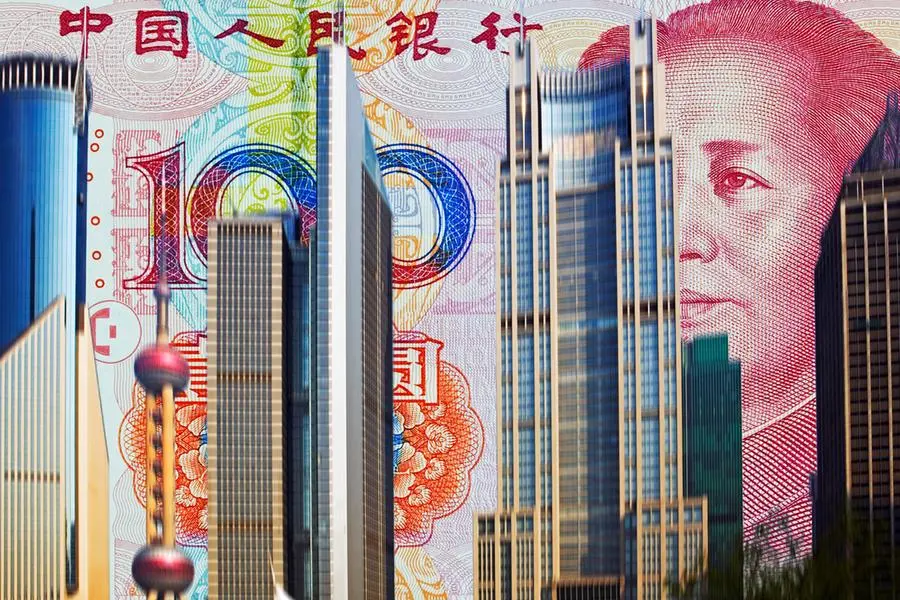PHOTO
NEW YORK – At this year’s China Development Forum (the highest-level annual meeting between senior Chinese policymakers and top CEOs, current and former policymakers, and academics like me), the discussion focused squarely on the risk of China falling into the dreaded “middle-income trap.” After all, few emerging economies have successfully joined the ranks of high-income countries.
Will China be an exception to this pattern? Following 30-plus years in which China achieved annual growth rates close to 10%, its economy has slowed sharply this decade. Even last year, with the strong rebound from the “zero-COVID” era, officially measured growth was only 5.2%. Worse, the International Monetary Fund estimates that China’s growth will fall to 3.4% per year by 2028, and, given its current policies, many analysts expect its potential growth rate to be only 3% by the end of this decade. If that happens, China will indeed find itself in the middle-income trap.
Moreover, China’s problems are structural, rather than cyclical. Among other factors, its slowdown is due to rapid aging, a busted real-estate bubble, a massive overhang of private and public debt (now close to 300% of GDP), and a shift from market-oriented reforms back toward state capitalism. Credit-fueled investment has grown excessive as state-owned banks lend to state-owned enterprises (SOEs) and local governments. At the same time, the government has been bashing the tech sector and other private enterprises, eroding business confidence and private investment.
In this new period of deglobalization and protectionism, China appears to have hit the limits to export-led growth. The West’s geopolitically motivated technology sanctions are constraining the growth of its high-tech sectors and reducing inflows of foreign direct investment (FDI); and the combination of a high domestic household savings rate and low consumption rates (owing to weak social insurance and the low share of household income) is further hampering growth.
The old Chinese growth model is broken. Initially, China’s low (and thus internationally competitive) wages meant it could rely on light manufacturing and exports, before pursuing massive investments in infrastructure and real estate. Now, Chinese authorities are advocating high-quality growth based on technologically advanced manufacturing and exports (electric vehicles, solar panels, and other green- and high-tech products) led by financial incentives to already-bloated SOEs. But without a matching increase in domestic demand – especially private consumption – over-investment in these sectors will lead to over-capacity and dumping in global markets.
China’s excess supply (relative to domestic demand) is already producing deflationary pressures, heightening the risk of secular stagnation. When China was smaller and poorer, a sharp increase in its exports was manageable in global markets. But now that it is the world’s second-largest economy, any dumping of its excess capacity will be met by even more draconian tariffs and protectionism targeting Chinese goods.
China therefore needs a new growth model concentrated on domestic services – rather than goods – and private consumption. Services as a share of GDP are too low by global standards, and though Chinese policymakers continue to talk about boosting domestic demand, they seem unwilling to adopt the fiscal and other policies required to boost private consumption and reduce precautionary household savings. The situation demands larger pension benefits, greater health-care provision, unemployment insurance, permanent urban residency for rural migrant workers who currently lack access to public services, higher real (inflation-adjusted) wages, and measures to redistribute SOE profits to households so that they can spend more.
While China obviously needs to boost private-sector confidence and revive growth with a more sustainable economic model, it is not clear that Chinese leaders fully appreciate the challenges they face. While President Xi Jinping has overseen the move back to state capitalism over the last decade, Premier Li Qiang, a known market-oriented reformer, appears to have been sidelined. Li neither held the customary press conference following the recent National People’s Congress nor met with the full foreign delegation at the latest China Development Forum. Instead, Xi himself hosted a smaller delegation of foreign business leaders.
The most charitable interpretation of these signals is that Xi now realizes he needs to engage the private sector and international multinational corporations to restore their confidence and boost FDI, private sector-led growth, and private consumption. Since Li is still around, perhaps he is pushing quietly for “opening-up and reforms,” while keeping a low profile to show deference to Xi.
But many observers have a more pessimistic interpretation. They note that after sidelining market-oriented technocrats such as Li, former Premier Li Keqiang, former People’s Bank of China Governor Yi Gang, advisers like Liu He and Wang Qishan, and a variety of financial regulators, Xi has created new party committees on economic and financial affairs that supersede government bodies. He has surrounded himself with advisers like He Lifeng, the vice premier for the economy, and Zheng Shanjie, the new head of the National Development and Reform Commission, who are sympathetic to the obsolete dogma of state capitalism.
Lofty statements and mantras about reforms and attracting foreign investment mean little. What matters are the actual policies that China pursues over the next year, which will show whether it can circumvent the middle-income trap and return to the path of more robust growth.
Nouriel Roubini, Professor Emeritus of Economics at New York University’s Stern School of Business, is Co-Founder of Atlas Capital Team and the author of Megathreats: Ten Dangerous Trends That Imperil Our Future, and How to Survive Them (Little, Brown and Company, 2022).
© Project Syndicate 1995–2024





















